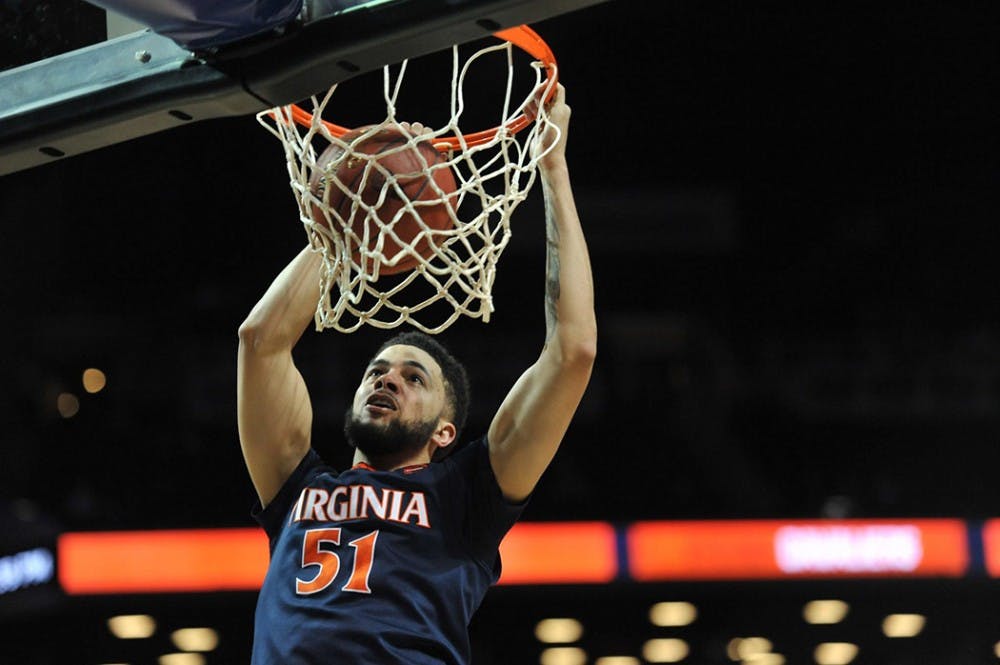Physical concepts — including velocity, acceleration and momentum — influence plays, passes and shots that ultimately determine basketball game outcomes.
Paul Landini, third-year College student and Physics major, said understanding physics could help basketball players.
“Knowing about projectile motion would be especially useful for a basketball player because, once the ball leaves the player’s hand, it [would be] eas[ier] to calculate where the ball will land,” Landini said.
Within the subject of projectile motion, hang time refers to the amount of time that an object spends at the highest point of its path. The hang time of both the player and the basketball affect the overall success of a shot.
The magnitude of an object’s initial vertical velocity determines the amount of hang time. For example, an increase in the height of a player’s jump due to an increased initial vertical velocity directly relates to an increased hang time.
Typical hang times range from half a second to a full second, Asst. Physics Prof. Robert Group said in an email statement.
Like the hang time of the player, the hang time of the basketball also depends on height. The arc of the basketball’s movement further affects its hang time.
According to Group, a certain arc in the trajectory of the basketball is necessary to make the basketball go into the hoop. A flat shot will hit the rim and bounce up and out the basket. Players must adjust the initial velocity of the basketball to increase or decrease the arc of the basketball.
Forces like gravity and air resistance also either accelerate or impede the ball along its trajectory.
“After the ball leaves the player’s hand, the dominant force is the force of gravity,” Group said. “Objects moving under the force of gravity follow a path that traces a parabola. However, the basketball also feels air resistance due to the air molecules bouncing off of the ball.”
A basketball player must estimate both the amount of initial force and the angle of release required to make the shot into the hoop. In free throws, a launch angle of 52 degrees from the horizontal is optimal. For three-pointers, shots at an angle of 45 degrees will more likely result in success.
After the basketball makes contact with the rim, physical concepts such as backspin continue to affect the movement of the basketball.
“The primary effect from the backspin is when the ball bounces,” Group said. “Backspin can make the ball bounce softer off of the rim, which increases the chance that the shot will still go in even if it hits the rim. Basically, it gives the ball a better chance of bouncing up above the rim, rather than continuing on in the direction the shot was travelling.”
Players use backspin to improve the likelihood of the basketball to get into the net. They can bounce the ball off the backboard or the back of the rim, which helps send the ball downward to the net. Movement of the middle finger has the most impact on the backspin of the basketball.
Even as scientists may mathematically determine how best to get the ball in the hoop, basketball players must understand these physical concepts on an instinctual level to maximize their potential to score.







